Welcome!
New Zealand is a diving paradise. With accessible coastlines, marine reserves and hundreds of offshore islands, the underwater world is vast and diverse.
The late Jacques Cousteau once said that he thought that the Poor Knights Islands Marine Reserve, off New Zealand’s Tutukaka Coast, were one of the world’s top five diving locations. This is a measure of what you can expect when you go diving in New Zealand.
You can dive wrecks, drop-offs and sub-tropical reefs in clean, clear waters. You can explore huge kelp forests, swim with school fish or alongside dolphins. For a different adventure and experience, try kayak diving or a descent after dark. nfo by newzealand.com
Best time to dive?
The best time to scuba dive New Zealand is between the months of January and June. This is New Zealand’s summer and fall, and it’s a time when the weather is a bit more settled, and the underwater visibility better. The summer will have the warmest sea temperatures, so might be your time of choice to dive. Stingrays are also found at the Poor Knights in larger congregations from December to March. Info by destination360.com
Best time to Dive?
The best time to scuba dive New Zealand is between the months of January and June. This is New Zealand’s summer and fall, and it’s a time when the weather is a bit more settled, and the underwater visibility better. The summer will have the warmest sea temperatures, so might be your time of choice to dive. Stingrays are also found at the Poor Knights in larger congregations from December to March. Info by destination360.com
- {{ listingType.name }}
- prev
- next
Do you offer Diving services?
Promote your services and connect with divers
Are you a Scuba diver?
Join and get the best benefits for your next trip
Do you offer Diving services?
Promote your services and connect with divers
Are you a Scuba diver?
Join and get the best benefits for your next trip
Sea Life
New Zealand’s marine ecosystems and species are highly diverse.
About 8000 marine species have been found in New Zealand waters, including:
964 species of fish, 2000 species of molluscs (snails, shellfish, and squid), 400 species of echinoderms (kina and starfish), 900 species of seaweed.
Shellfish and some other marine invertebrates remain vulnerable to over-harvest and habitat degradation,
caused by sediment from rivers, pollution, changes in sea temperature, and fishing activities.
Although New Zealand’s coastal waters and habitats are generally held to be of high quality by international standards,
they are under stress in some areas, particularly near large estuarine towns and cities and the mouths of large rivers.
Estuarine and marine ecosystems are also threatened by the invasion of exotic species. Info by media.newzealand.com
Dive Sites
Qualified divers are spoiled with different types of dives off the coast of New Zealand.
Nevertheless, if you are a newbie to the dive scene there are plenty of awesome dives to do with activity providers.
The islands off the shore of the North Island attract tropical fish, whereas the fiords found in the South Island provide the perfect environment for black corral. Dive deep into the waters of the famous Milford Sound, or there is a choice of wreck dives, especially around the Bay of Islands and Northland, for more technical divers. You can even explore the ocean that attracts so many sea mammals in Kaikoura.

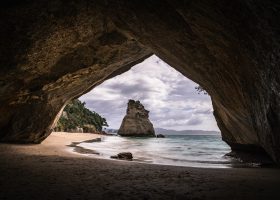
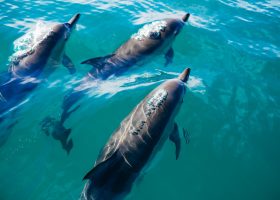
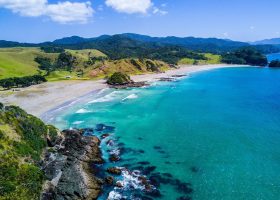


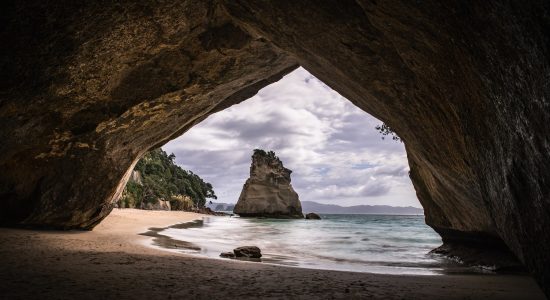
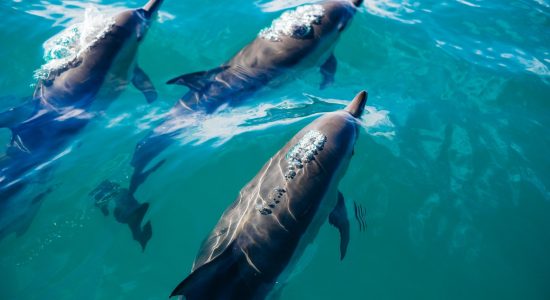

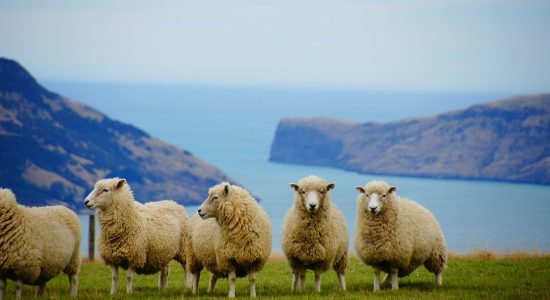
Poor Knights Islands
Poor Knights Islands is mostly known for its diving opportunities. There are four dive spots, but your diving trip isn’t complete until you do the Maomao Arch, with thousands of maomao swimming around you! With tropical currents often coming through the area, this often brings a fascinating array of fish. Access Poor Knights Islands from Tutukaka in Northland
White Island
The waters off White Island, New Zealand’s most active volcano, attracts colourful tropical marine life and larger fish. There are three dive spots: Volkner Rocks, Club Rocks and Liason’s Reef. Check out the underwater vents too in this unique volcanic location. White Island and its dive sites can be accessed from Whakatane in the Bay of Plenty.
Tui Wreck
This vessel was sunk for the purpose of an artificial reef, so amongst the growth, there are golden snapper and an array of fish species that will keep you entertained for as long as your oxygen allows. Tui Wreck is another dive site off Tutukaka in Northland.
The Mikhail LermontovWreck
If you have a go big or go home mantra, then this wreck dive is for you. The Mikhail Lermontov is the biggest shipwreck dive in Australasia. It is in Port Gore, Marlborough Sounds.
Aramoana Mole
An easily accessible dive near Dunedin, Aramoana Mole is a place to explore underwater forests and its inhabitants. You’re also likely to bump into some seals along the way too. Be prepared for the cold southern South Island waters.
Fiordland National Park
The fiords in Fiordland National Park shelter its water, keeping it calm and clear for undisturbed visibility. Milford Sound and Doubtful Sound are known to have black and red coral giving you the opportunity to see wildlife that would usually be a lot deeper in the ocean.
Rainbow Warrior
Just off the coast of the Bay of Islands is the sunken Rainbow Warrior. The Rainbow Warrior was a Greenpeace ship on its way to protest France’s nuclear testing in Muroroa when it was sabotaged in the Auckland Harbour and sunk in 1985. It now rests as an artificial reef in the Cavallii Islands attracting all kinds of marine life.
Kaikoura
The South Island town of Kaikoura is famous for attracting sperm whales, dusky dolphins, New Zealand fur seals, albatross and more! Although you can go swimming with these sea mammals, isn’t complete until you explore the kelp forests and limestone reefs of the underwater world.
Mercury Islands
Swim amongst hundreds of schools of fish and even spot octopus (and sharks!) in the marine reserve surrounding Mercury Islands’ waters. The dive location can be accessed from Whitianga on the Coromandel Peninsula.
The Canterbury
If you are a qualified diver then you have the opportunity to dive to one of the Bay of Island’s most popular dive sites, the wreck of the HMNZS Canterbury. This huge and intact shipwreck is impressive to swim through with a highlight being the helicopter hanger.
Dive sites info by nzpocketguide.com
How to Arrive
The best way to travel to New Zealand is obviously by air (unless you want to spend a lot of time on a boat). Most major airlines offer direct flights to New Zealand. It’s easy to get here on a non-stop flight from America, Australia, Canada, Chile, China, Hong Kong, Japan, Korea, Malaysia, Singapore and Thailand. Or you can get a connecting flight from these countries to New Zealand from anywhere in the world. Info by firstlighttravel.com

